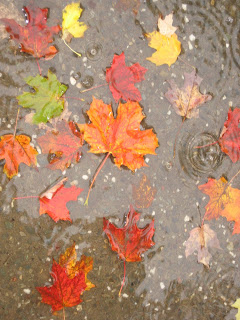
Leaving the South, we stopped for one last Southern meal of pulled pork, collard greens, sweet potatoes and fried okra at the Loveless Café outside Nashville, a soul food destination that attracts all the expected country music stars, along with less likely diners like Beverly Sills, Sharon Stone and Martha Stewart.
Arkansas and Oklahoma seemed to go on forever, but we finally crossed into New Mexico and pulled into the campground outside Santa Fe in early evening, celebrating by making a couple of big, icy martinis. The cobalt sky turned to star-studded indigo and we heard the distant yip of a coyote.
Santa Fe has always been a special place for us, possessing an aura both simple and sophisticated. It's a land of religion and ritual, barren landscape and wildly colorful décor. We love its searing chiles, art-filled lifestyle and crisp evenings scented with pinon smoke. It feels like another country, with its artists and curanderas, penitentes and poseurs. We always seem to meet the most interesting people and have fascinating conversations.
The region’s spirituality runs deep in the tiny village of Chimayo, where pilgrims have trekked for nearly two centuries to visit the santuario, reported site of Lourdes-like miracles. I made my way into the tiny church under the watchful gaze of the elderly caretaker, careful to keep my camera zipped inside my bag. Ducking through the low opening to the sanctuary, I slowly walked the perimeter, once again finding the experience extraordinarily moving. A wall of crutches bore testimony to owners now presumably walking. Hundreds of color photos formed a mosaic of faces young and old, but without text, it was impossible to know whether they still lived. The opposite wall was dedicated to police officers and military personnel who’d lost their lives in the line of duty. Over time, the large number of visitors and confined space had apparently limited miracle-seekers to one small photo.
But when we first visited 20 years ago, scraps of paper bearing heartbreaking stories in several languages covered the adobe walls. Handwritten notes seeking divine intervention kept me mesmerized for over an hour until, faint from the heat of so many candles in the small space, I ducked under an even lower opening into a tiny room. There, a circular hole in the floor exposed the sacred dirt of reputed curative powers. We’ve had some in our house for years. I figure, it can’t hurt.
* * *
It was yet another country when we pulled into Chinle, Arizona, a Navajo reservation bordering the spectacular Canyon de Chelly. The gritty treeless town with deeply rutted roads had the usual array of fast-food joints, small businesses and gas stations, with the addition of free-range animals. Dozens of look-alike dogs, none of them recognizable breeds, prowled the streets. Two cows ambled down the road past the Best Western motel and a pack of horses browsed in the weeds near the Shell station.
We camped under golden cottonwood trees in a free campground maintained by the Park Service, among the only other palefaces we encountered. We hired a Navajo guide and, along with a visitor from Georgia, spent half a day in the canyon, bouncing through deep sand, splashing through washes and driving under red sandstone overhangs that rose hundreds of feet above us.
Cottonwoods glowed in the November sun that turned the face of the rock turquoise from one angle, jet- black from another. Horses wandered freely, replaced as farm workers by machinery and left to wander, browsing the leaves of willow and Russian olive at the edge of the wash. A coyote bounded across the trail as we approached.
Much like the Anasazi before them, Navajo still return to the canyon in the summer to grow corn, beans, squash and fruit trees on ancestral lands. A few remain year-round, tending crops and sheep through spring floods and biting winter freezes.
We saw the ruins of Anasazi cliff dwellings and petroglyphs dating back nearly 2,000 years, along with more recent rock drawings created by the Navajo of the mid-nineteenth century.
One such set of drawings depicted the arrival of the Spanish on horseback in the 1700s, drawn to the canyon in search of gold. Two circles representing suns indicate the amount of time it took to kill all of the canyon dwellers the explorers encountered. Centuries of bloodshed and slavery ensued, and the remaining Navajo were driven from the valley by Kit Carson in the mid-1800s. The population of the sacred place would never be the same.
That afternoon we explored Canyon de Chelly from its south rim, marveling at formations like Spider Rock, legendary home to Spider Woman, who taught the Navajo to weave. Later we met a code-talker, still proud of the role his fellow Navajo played in “saving Americans from the Japs” in WWII.
Mist obscured the road and frost had turned the high grass to silver when we left that world early the next morning to return to ours. Next, a stop in Sedona, and in a few days we’ll be home, the journey over.
For the final photo album: Click on first photo to view one at a time.
http://picasaweb.google.com/happytwo.mcwilliams/TripEast10SW?authkey=Gv1sRgCJy1692Nl56J2wE&feat=directlink















